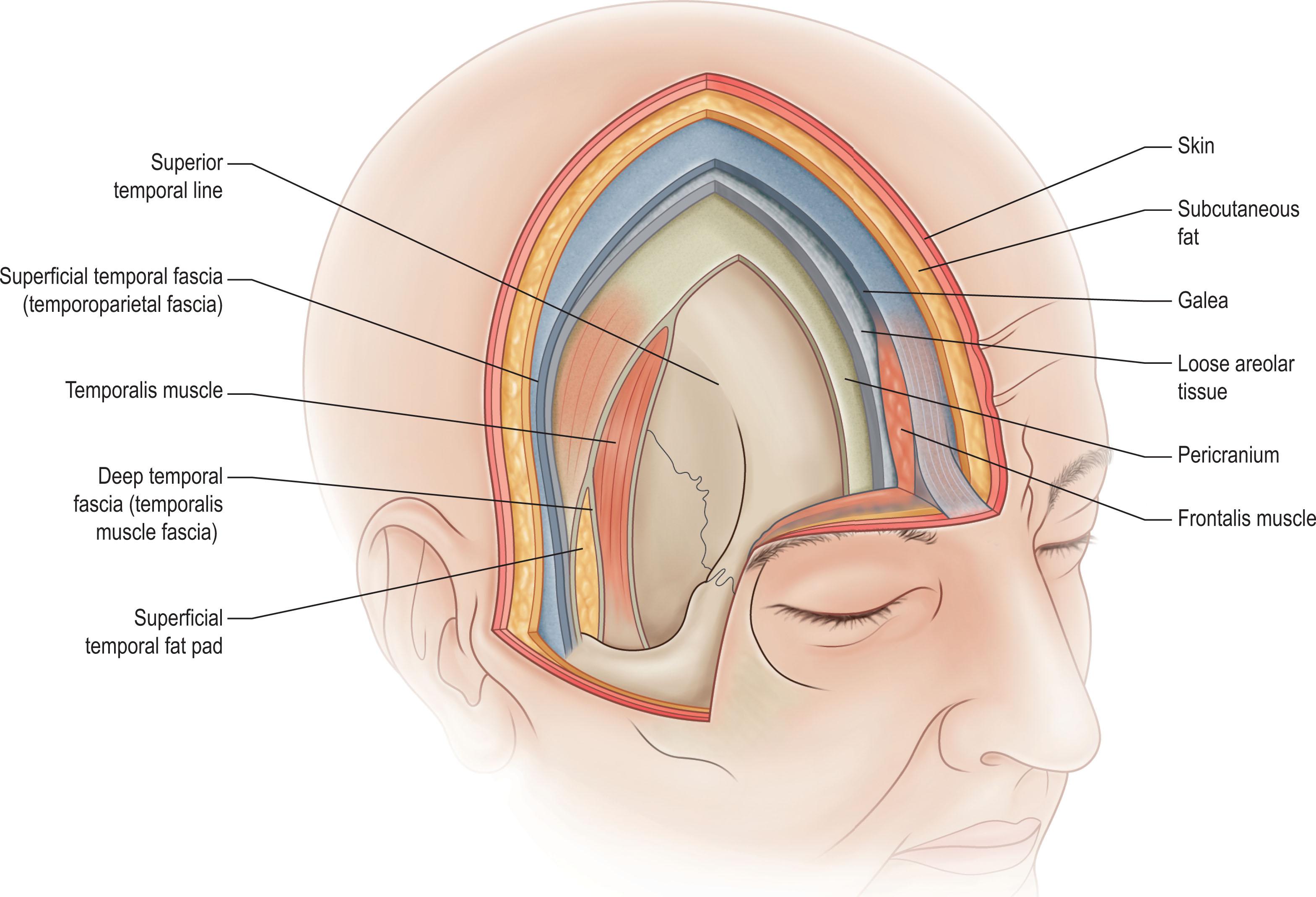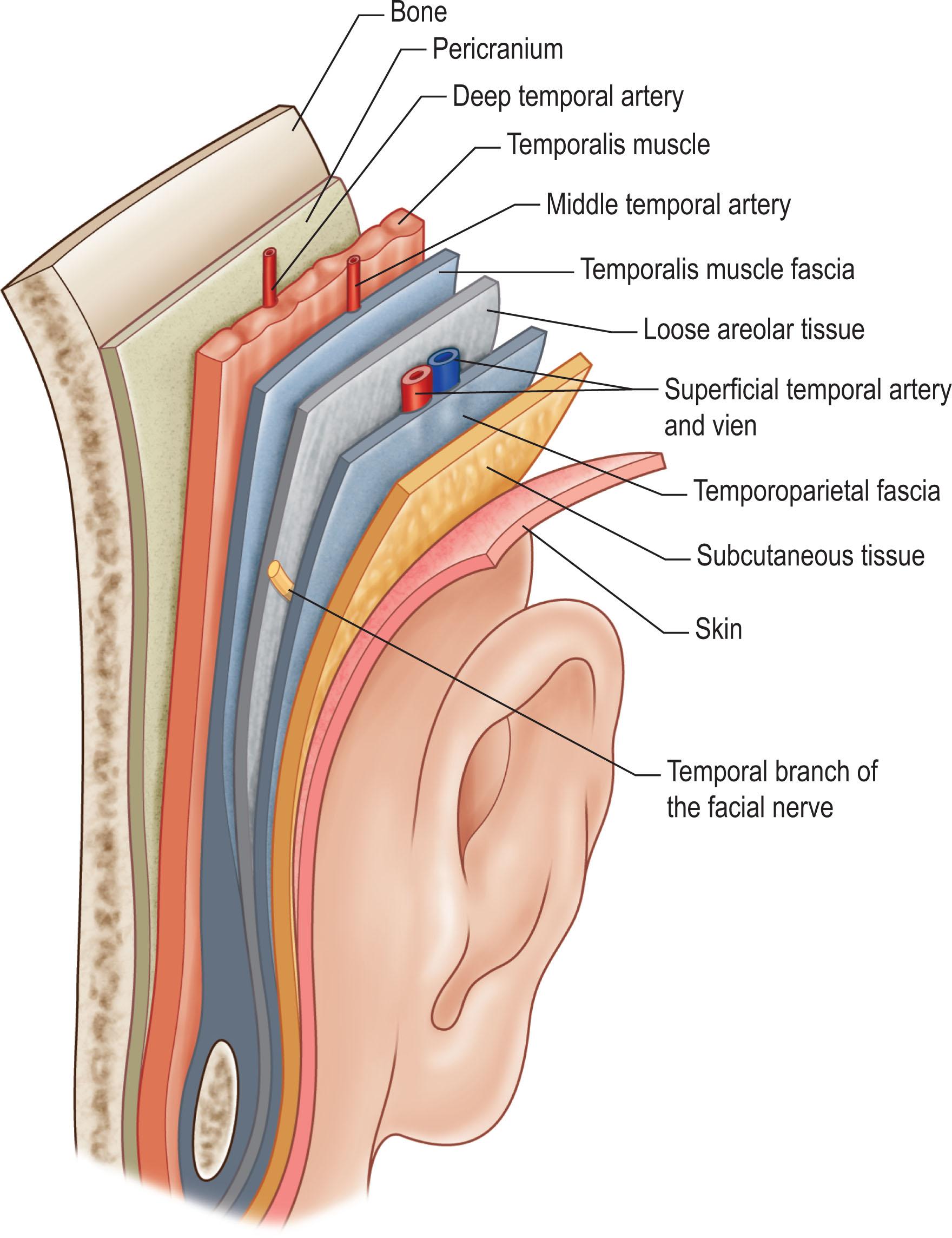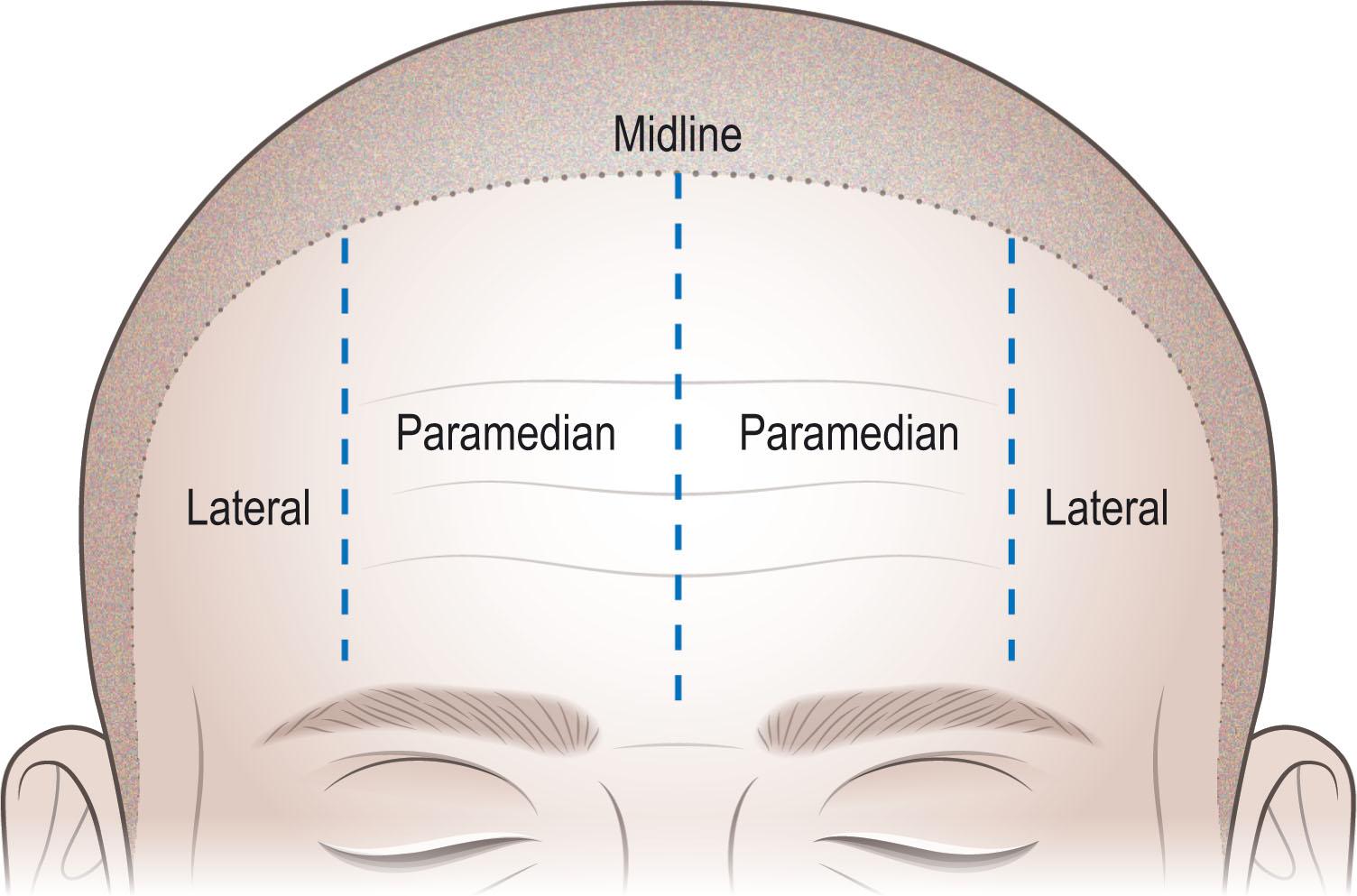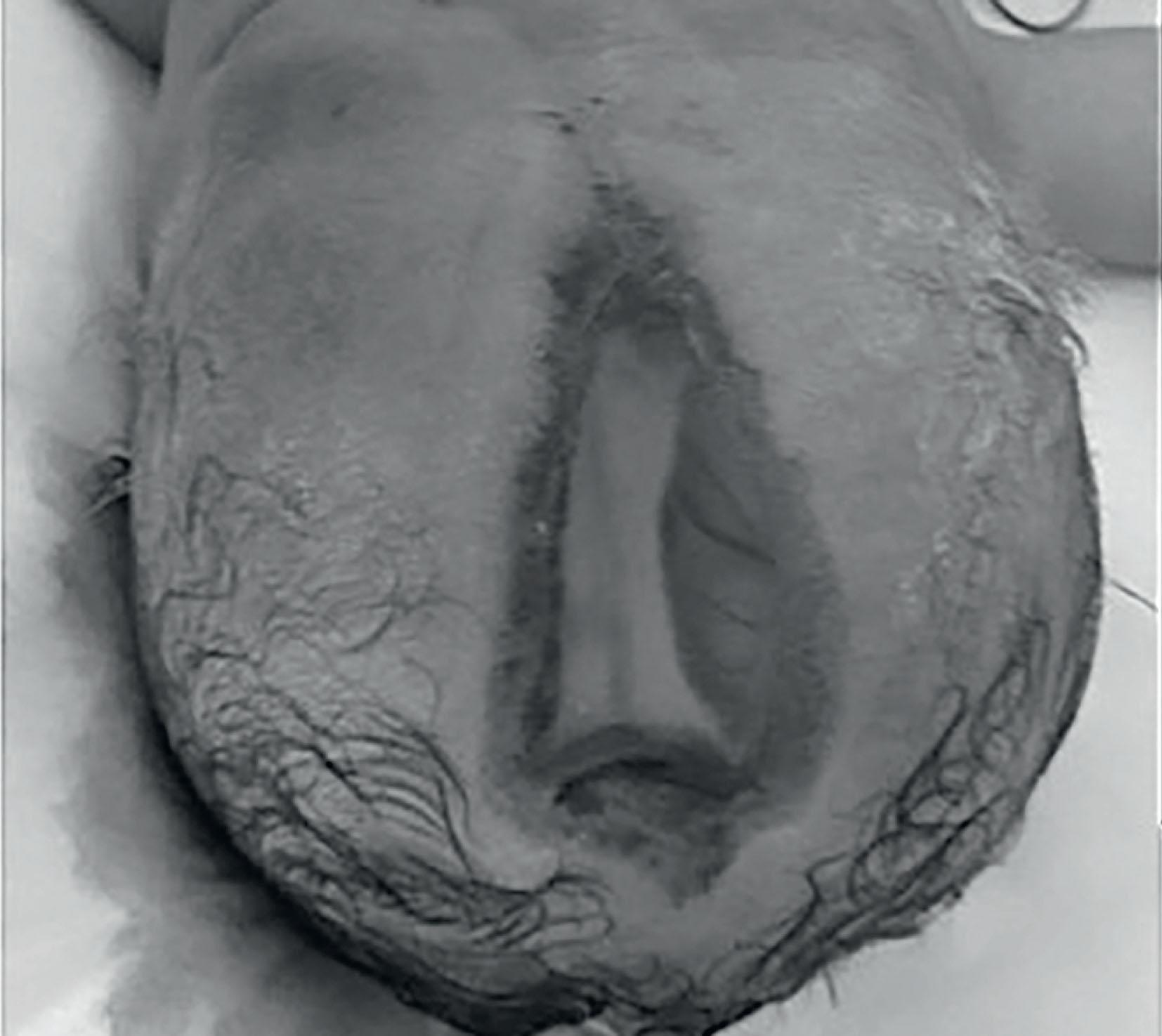Physical Address
304 North Cardinal St.
Dorchester Center, MA 02124
The forehead heals particularly well by secondary intention when local flaps are inadequate.
When additional skin is necessary in the context of radiation, a thin, non-hair-bearing fasciocutaneous free flap is optimal.
Regional or free flaps are usually required for scalp defects that include the pericranium.
Unlike other head and neck sites, tissue expansion may play a role in reconstruction of the scalp.
The reconstructive ladder is highly relevant to this region, with all rungs being utilized from skin graft to allotransplantation
Access video lecture content for this chapter online at Elsevier eBooks+ ![]()
The scalp and forehead are highly specialized, aesthetically important structures. The practicing plastic surgeon must be familiar with a number of benign soft-tissue and osseous conditions that have a predilection for this unique anatomical region. Considering reconstruction, scalp and forehead tissue is intrinsically inelastic, limiting the application of primary closure and local flaps. Skin grafts are possible when the pericranium is intact, and a variety of local flaps can be strategically and creatively designed. There are only three regional flaps (pericranium, temporoparietal fascia, and temporalis muscle), all of which have a limited arc of rotation thereby minimizing their utility; as a result, microvascular free tissue transfer is commonly required for durable reconstruction in this area of the body for sizable defects.
The scalp is a layered structure, made up of the s kin, sub c utaneous tissue, galea a poneurotica, l oose areolar tissue, and p ericranium (SCALP) ( Fig. 2.1 ). The frontalis muscle overlies the frontal bone and is connected to the occipitalis muscle posteriorly, through the galea aponeurotica. The blood supply of the forehead and scalp is robust and consists of the paired supraorbital, supratrochlear, superficial temporal, posterior auricular, and occipital vessels. The sensory nerves are also paired and include the supraorbital, supratrochlear, zygomaticotemporal, auriculotemporal, lesser occipital, and greater occipital nerves. The most clinically significant motor nerve is the temporal branch of the facial nerve, which innervates the frontalis muscle. This branch is located on the deep surface of the temporoparietal fascia and follows a course approximated by a line extending from 0.5 cm inferior to the external auditory meatus to a point 1.5 cm superior to the lateral eyebrow. Dissection in this area is occasionally needed in order to access the zygomatic arch for reduction and internal fixation or to raise a temporalis muscle flap; in order to avoid injury to this important nerve, dissection is performed in a plane deep to the superficial layer of the deep temporal fascia. The calvarium is covered by thick periosteum commonly called pericranium, which can be utilized as a local flap.

The temporal scalp deserves specific mention, given its four distinct fascial layers ( Fig. 2.2 ). The most superficial layer is the temporoparietal fascia or superficial temporal fascia. The superficial temporal artery and vein travel along the superficial surface of this layer; the temporal branch of the facial nerve runs on its deep surface. The temporoparietal fascia is the lateral extension of the galea and in continuity with the superficial musculoaponeurotic system of the face. The temporoparietal fascia is densely adherent to the overlying skin and subcutaneous tissue, making dissection between the two planes difficult. Unless care is taken, it is very easy to damage the overlying hair follicles when separating the two planes, resulting in temporal alopecia.

Deep to the temporoparietal fascia is the subgaleal fascia. Deep to the subgaleal fascia is the superficial temporal fat pad. Deep to the fat pad is the deep temporal fascia, which surrounds the temporalis muscle. Superiorly, this layer fuses with the pericranium. Inferiorly, it splits into two layers at the level of the frontozygomatic suture. The superficial layer of the deep temporal fascia attaches to the lateral aspect of the zygomatic arch and the deep layer of the deep temporal fascia fuses with the medial aspect. Division of the superficial layer of the deep temporal fascia with a bicoronal flap allows for reflection of this layer, providing access to the zygomatic arch and craniofacial skeleton without injury to the temporal branch of the facial nerve as it passes superficial to the arch.
The forehead can be divided into five aesthetic subunits, each bordered by the frontal scalp superiorly and the brows inferiorly ( Fig. 2.3 ):
Midline
Right and left paramedian: extending over the convexity of the forehead from the midline to the mid-brow
Right and left lateral: extending from the mid-pupillary line to the junction with the temple

Owing to its unique and specialized anatomy, there are a number of benign conditions that have a predilection for the scalp and forehead. These can be organized according to etiology, including congenital and acquired conditions.
Aplasia cutis congenita is a rare congenital condition characterized by the absence of all skin layers and subcutaneous tissue. Although it can manifest anywhere, it is associated with the scalp in 70% of instances ( Fig. 2.4 ). Among cases localized to the scalp, absence of the skull and dura occur in 15–30% of cases. When the brain or dura is exposed, urgent surgery is required within the first few days of life to provide durable external coverage for the central nervous system. If the defect is not full thickness, temporizing moist wound healing strategy is used until the patient is old enough for definitive treatment.

Become a Clinical Tree membership for Full access and enjoy Unlimited articles
If you are a member. Log in here